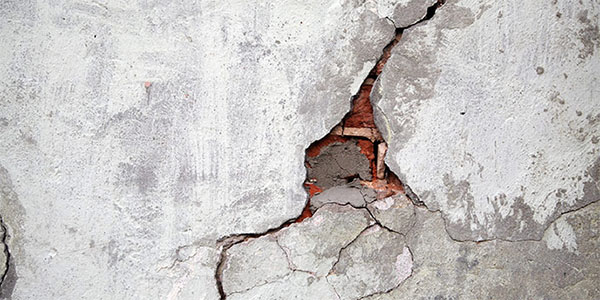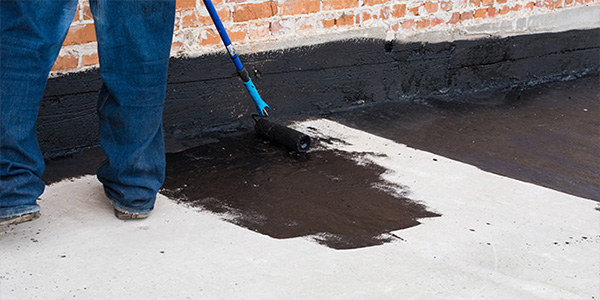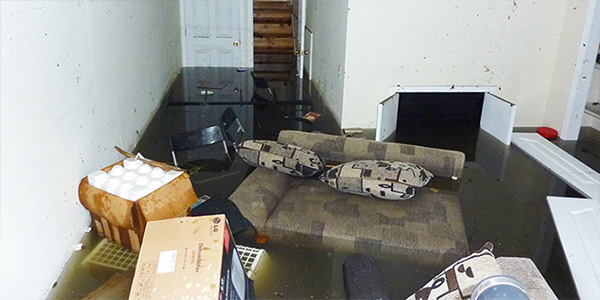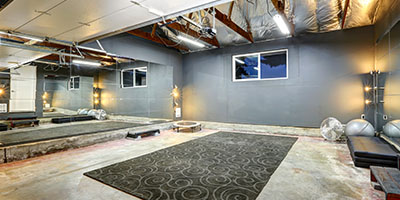Waterproofing a Basement: When, Where and How to Do It

How to Waterproof Your Basement
A basement can hold lots of things, from entertainment centers and laundry machines to winter clothes and holiday décor. But one thing no one wants in their basement is standing water.
If you haven’t waterproofed your basement, rain and groundwater can find a number of ways into your home and wreak havoc on the structure and your belongings. It pays to be on the lookout for symptoms of excessive basement moisture, and to know how to stop it in its tracks.
Signs Your Basement Needs Waterproofing
The first step of waterproofing a basement is to know what to look for. Here are a few common signs that might mean it’s time to get your basement’s moisture under control:
- Mold or Mildew: This can be caused by excess moisture in the air, even if standing water doesn’t collect in your basement. Mold can also present a health risk if left unaddressed. Using a dehumidifier is a great mold mitigation method.
- Peeling Paint: Paint can peel off walls for many reasons; it may have been the wrong kind of paint or the surface may not have been properly prepared. However, there could also be excess dampness in the wall you’re trying to paint.
- Leaking Walls: Bare basement walls can leak and occasionally form damp spots and condensation. This can be caused by leaking pipes behind the concrete, or by water seeping in through the soil on the other side of the walls.
- Dry Rot: This blackish-brown fungus usually appears as a byproduct of the decaying process and typically grows on wood. It can grow as a result of leaks and excessive dampness.
- Flooding or Standing Water: If your home sits on a high water table, water could be finding its way into the structure through faults in the floor or walls. Regular flooding could also be the result of a plumbing or yard drainage issue.
If you notice one or more of these warning signs in your basement, it could indicate a lack of a watertight seal in your basement’s walls, doors, windows or foundation.
On the other hand, if your basement floods with standing water on a regular basis, your basement could be suffering from plumbing problems or a variety of serious foundation issues. In this case, it’s best to call in a professional plumber or foundation repair expert to examine the space as soon as possible.
Environmental Factors
Aside from structural issues around the house, the environment around your home also plays a part in your basement’s water control issues.
If your home sits at the bottom of a hill or on a high water table, chances are that rainwater will come to rest on or around your property, making basement flooding more likely. It’s important to plan for these factors accordingly, by thoroughly waterproofing basement walls and floors. Comprehensive flood insurance coverage is also worth considering.
Different Ways to Waterproof Your Basement
Although foundation repair and floor damage recovery should be left to trained experts, there are a number of waterproofing projects you can tackle on your own to prevent basement flooding and reduce the risk of intrusive moisture. Use these basement waterproofing tips to keep your home dry and comfortable.
In addition to cutting down the risk of flooding and standing water, the benefits of waterproofing can include cutting down on musty odors, preventing mold and dry rot, and keeping furniture and belongings safe from water damage.

Buy a Dehumidifier
If your basement waterproofing efforts are aimed at cutting down musty, subterranean humidity and condensation, a residential dehumidifier unit may do the trick. Dehumidifiers draw moisture out of the air before it can dampen and ruin walls, carpeting, furniture and more.
Dehumidifiers come in many varieties, but most plug directly into wall outlets and can be emptied regularly when their catch basins are full. Many can also be fitted with hoses so they can empty continuously into a wash tub or floor drain, eliminating the need to empty them manually.
Choose Waterproof Carpeting Materials
Carpeted surfaces can take a beating if your basement has water control issues. Luckily, there are steps you can take to protect them from leaks and standing water. If you currently have bare floors or are in the market to replace your flooring, waterproof carpeting could be a good investment if your basement has flooded before or has issues with condensation.
You can also install water-resistant carpet pads to create a buffer between your basement floor and the carpet itself.
Even if standing water isn’t an issue in your basement, carpeted areas should be cleaned periodically to stave off mold growth, especially the spots underneath your furniture.

Pro Tip
Wet carpet should be thoroughly dried with fans and dehumidifiers. The carpet should also be steam cleaned as soon as possible in order to sanitize and prevent musty odors from setting in. If the scent of mildew has permanently set in and it’s too late to save your carpet, you may need to tear it out entirely.
Apply Waterproof Sealant to Walls and Floor
Cracks can sometimes appear in concrete or brick walls, allowing water to seep in from the outside. If you don’t know how to seal basement walls, don’t sweat it – it’s usually as simple as sealing the crack with hydraulic concrete and coating the broken surface with masonry waterproofing paint.
If the paint is peeling off, first consider removing it to identify any leaks underneath. Before waterproofing basement walls, prepare the surface by thoroughly cleaning with a wire brush to remove any lingering deposits. Apply a solid layer of waterproof sealant and let it dry completely before attempting to re-paint.

Keep Wood Surfaces and Water Separate
Dry rot can occur if water or excess moisture makes prolonged contact with wooden surfaces and structures – especially support beams and floorboards.
To prevent dry rot from cropping up in the future, eliminating potential sources of excess moisture, such as leaking pipes that make contact with the wood, is an important step. The wood should also be kept separate from the soil surrounding the foundation in order to reduce the risk of dry rot.

Pro Tip
If dry rot has taken hold in part of your basement, fungicide can be purchased at most home improvement stores and used to clear the mold away. Keep in mind that these chemicals can be hazardous to pets and children, so follow the directions on the container and use with caution.
Look for Outdoor Issues
Even though issues like mildew, peeling paint and dry rot may manifest indoors, exterior factors are often a part of the problem. As you’re waterproofing your basement, it’s important to check your gutters and downspouts for leaks, which can lead to rainwater flowing directly toward your foundation.
Turn to the Professionals
If you’re struggling to contain routine leakage or flooding in your basement during rainstorms, there could be a variety of contributing factors that may be out of your control. Addressing these basement waterproofing problems takes professional training and equipment, so it’s recommended to reach out to an expert for advice or service.
Long-Term Damage Control
The benefits of waterproofing extend beyond preventing damage and costly repairs – it also provides peace of mind. In addition to the restorative and preventative projects covered here, there are other steps homeowners can take to be better prepared in case of unforeseen water damage.
If your property’s water table sits around or level with your basement, a sump pump may be a wise investment to divert water away from the structure to prevent basement flooding. If you’re still worried about flooding, it may be worth arranging the space so that valuable belongings don’t make direct contact with the ground.

Pro Tip
If repeated flooding or constant moisture in your basement have already taken their toll on some of your belongings, find the right disposal solution for them:
How to Dispose of Appliances
How to Dispose of Electronics
How to Dispose of Mattresses
How to Dispose of Furniture

Basement Still Flooding? Call a Pro and Have a Plan
When it comes to protecting your home from water damage, waterproofing your basement is a crucial piece of the puzzle. But if, despite your best DIY efforts, your basement still ends up becoming an indoor swimming pool, you need to have a plan of action – it’s important for the safety of your belongings and your loved ones. In addition to calling a professional, learn what to do (and what not to do) when your basement floods.
Still not done working on your basement? In addition to these basement waterproofing tips, consider finishing the space with sealed insulation.



